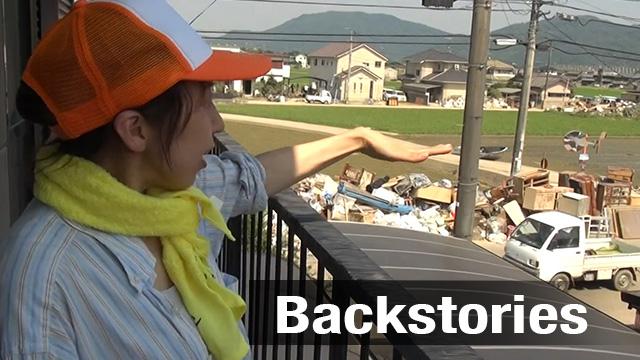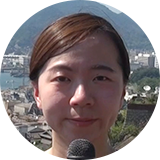Alone in the flood for over 9 hours
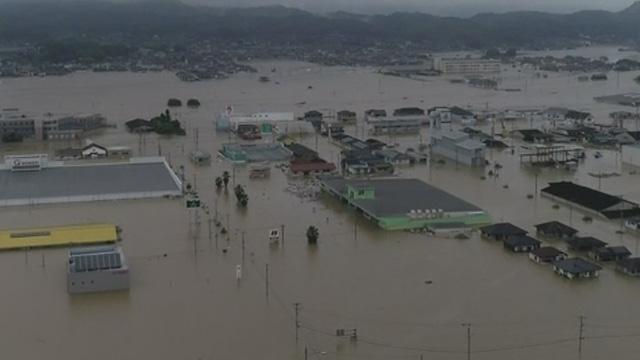
The city of Kurashiki saw some of the worst flooding. Vast areas were submerged when river banks collapsed, inundating hundreds of homes. Our crew was in Mabi, one of the hardest hit districts, to meet with a Chinese woman there.
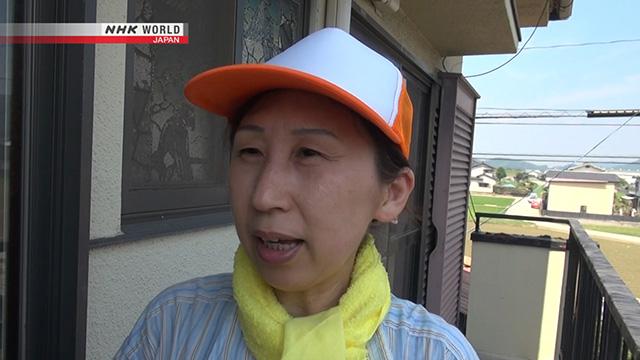
Zhang Dongxia was living alone in a 2-story house. As the rain fell heavily on the morning of July 7, she was watching TV, trying to understand what was happening with her limited Japanese. The power went out before she could get the information that might have helped her to evacuate.
When the flood waters started to rise around 9 am, she had no time to escape. She grabbed a bowl of cooked rice and some water and fled to the second floor. All she could do was stay in telephone contact with her daughter, and wait.
Zhang's daughter lives several hours away and was working at the time. Hearing about the floods, she decided to drive to Mabi, spending hours in a traffic jam only to reach the outer edge of the area under water. She called emergency services, but they were already overwhelmed with requests for help.
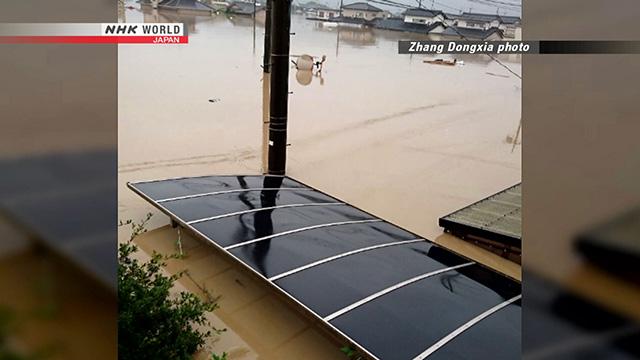
Zhang continued blowing on an emergency whistle for hours, but no one came. The water rose as high as the car park roof. “It was getting dark and my cellphone battery was running out. I wondered what would happen if I couldn't get out before the water rose up. It was really a terrible time.”
Zhang’s daughter told her not to make any calls to save power, and promised to phone her once every hour. “My mom even told me the password for her bank account. She was imagining the worst,” she said.
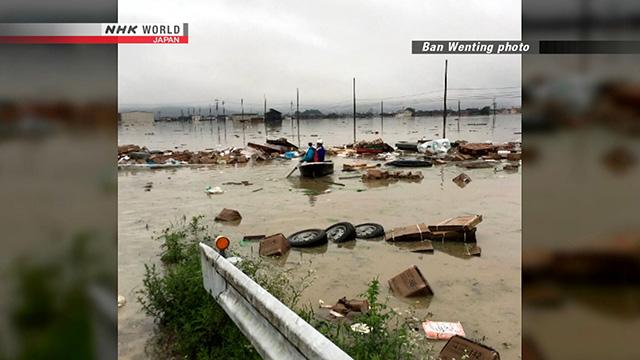
Luckily, the daughter spotted 2 volunteers who were helping people escape by boat. She jumped out of her car and shouted, “Please let me get in. My mom is trapped in the flood!”
It was getting dark and the road signs were submerged, but she managed to find her way to her mother. Zhang was rescued 9 hours after she had fled to the 2nd floor of the house.
She was one of the lucky ones, because her daughter was able to get help.
Evacuee Helps Others
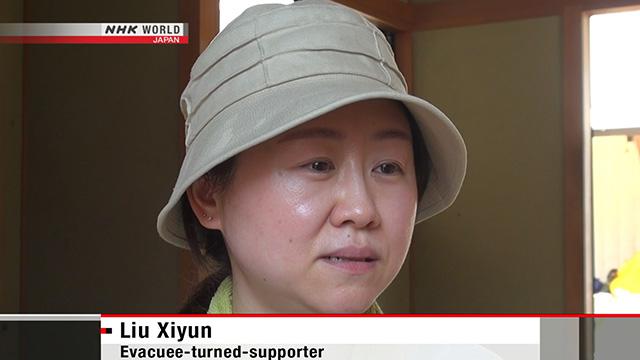
Liu Xiyun is another flood victim. Her house is devastated, and she is staying temporarily in a city near Kurashiki in a room that belongs to a friend. She is also vice-president of a local Chinese association, so, despite her own difficulties, she has set out to help others in need.
Liu has used her network to rally people who can help deliver relief goods and clean up. About 10 days after the rains stopped, more than 20 volunteers gathered to clean the garden of another Chinese resident. Thanks to the volunteers, the clean-ups have been quick, which is reassuring for the victims.
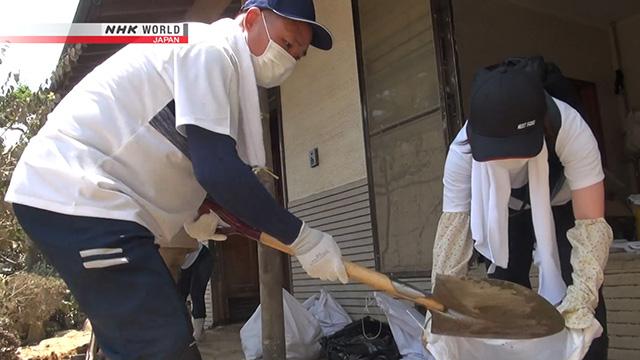
Post-disaster Difficulties Vary
Kure is an industrial city in Hiroshima Prefecture. More than 3,000 non-Japanese were living there when the rains hit this city on the night of July 6.
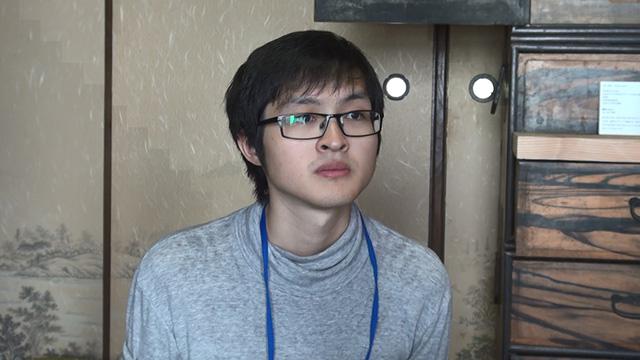
Fok Tsi-ho from Hong Kong works at a guesthouse. He was home alone the night the evacuation order came. He rushed to a shelter and spent the night there, but decided to leave the next day. He said he didn’t feel comfortable there, even though he speaks Japanese well.
He said there was no information at the shelter for non-Japanese, and he worried that those who couldn't speak Japanese would have had a hard time there.
Many foreign workers from Vietnam and the Philippines are helping sustain local businesses. They were in a particularly critical situation when the water was cut off after the rains.
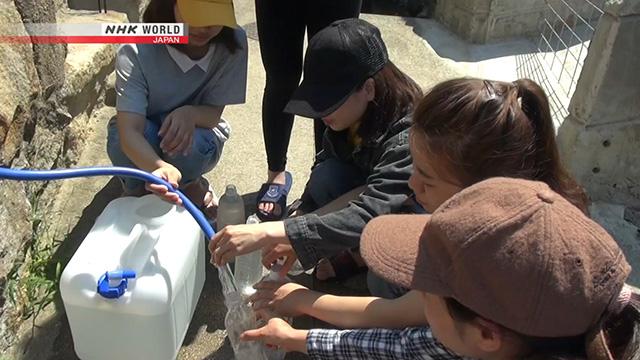
We went to a place where a group of Vietnamese women are living. They came to Japan six months ago to work at a local food company. The days immediately following the disaster were especially hard for them. They had never experienced a water shortage, let alone in a foreign country. They were going to the river to fetch water before a neighbor told them they could use her well.
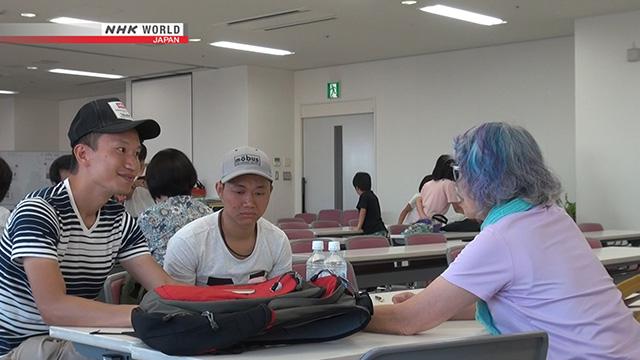
A volunteer group in Kure is teaching Japanese to foreign workers. After the disaster, they tried to contact each of their students and offer advice.
Japan working to improve services
Officials at Kure City Hall have started a new program to assess the needs of non-Japanese residents. All residents have to fill out disaster relief forms explaining their needs. The forms are now translated into 9 languages, including English, Vietnamese and Tagalog. This is a first step toward building sustainable administrative support for residents from overseas.
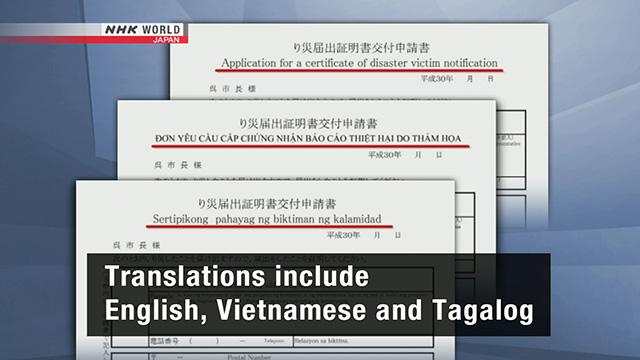
While grass roots efforts have proven effective during the latest disaster, more long-term support will be needed from Japan’s public sector.
More than 2.5 million non-Japanese live in the country, with over 28 million visitors annually. As the Japanese population ages, Japan continues to recruit workers from overseas. In a country where the risk of natural disasters is high, more must be done to ensure the needs of foreign residents are also met.
